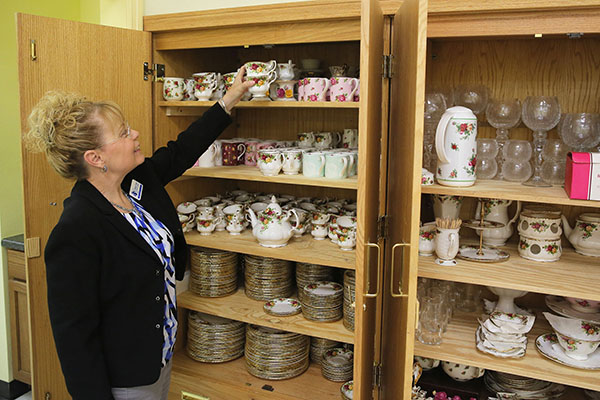Almost 20 years ago, while sitting with her daughter at a mall food court, Kim Carr noticed internationals in exotic clothing surrounded them. She asked her daughter, “When did they all get here? Where are they from? Who is reaching them?”
Armed with a new sensitivity and prompted by the Holy Spirit, Carr felt led to learn more. She began to ask questions and along the way she met a former International Mission Board journeyman who had been praying just hours before for someone to help with international refugees.
Carr’s journey had begun. She got her English as a Second Language certification and immediately started looking for students. Surely Jacksonville, Florida — 1 of America’s 30 refugee intake centers — would have people needing to learn English, she thought. And she felt God leading her to help unreached, unengaged people groups (UUPG).
Growing project
She started teaching classes at Chinese restaurants until the YMCA had a plan for what would become a growing project.
Fast forward two decades and today the International Learning Center (ILC) of Jacksonville has taught English and citizenship to more than 6,000 people from 108 countries. It has its own 10,000-square-foot building and a thorough curriculum that the North American Mission Board (NAMB) hopes to see implemented in cities throughout North America.
More than 1,500 students have made professions of faith while establishing more than 94 house groups. And God has done this through a woman who hated English as a subject in school. With a bachelor of science in nursing degree, Carr’s professional expertise was starting and running medical businesses.
“I kept trying to talk God into a clinic and He kept saying English,” Carr said.
Jacksonville is one of the smallest intake centers in the United States but the flow of refugees into the city is diverse. Carr believes most cities have the same mix of immigrants and could use an ILC.
New refugees face many obstacles once they arrive. Most don’t know English or America’s culture and many left their homeland penniless.
Many flee to America because of threats on their lives, mostly coming from countries where they are leery of western religion and slow to trust.
Through ILC, Carr and her volunteers focus on teaching English and citizenship skills, which the immigrants typically are eager to learn. As relationships develop she is able to refer students to planters from their language and culture. Those planters become advocates for the immigrants to help them navigate a new and confusing culture.
Many eventually join a house group and “they bring trusted family and friends into their group,” Carr said. “They don’t casually bring somebody who just decided to become a believer. They are careful to vet those they bring in.”
The ILC model of partnering a compassion-based program with indigenous planters is the most natural outcome one could hope for, Carr said.
“When you meet people’s needs with excellence, establishing an authentic relationship with them, you are so different than anything they have seen,” Carr said. “And they will listen to why you are different.”
Jacksonville’s indigenous planters help immigrants understand that following the Lord isn’t just a western religion.
When NAMB leaders discovered Carr and ILC, they realized the 32 Send North America cities need the Jacksonville model. So NAMB’s Send Relief focus has developed an ILC initiative and made Carr the national director and mobilizer. Now she’s working to establish new ILCs across the United States and Canada.
She continues to work out of Jacksonville but travels frequently to other cities to implement the ILC template with its proven teaching curriculum.
She receives funds from NAMB’s Annie Armstrong Easter Offering (AAEO) for her work. A key component of the template replication will be a partnership with local indigenous planters who start house groups in each Send City.
“At ILC, 25 to 50 may make a profession,” Carr said. “However, the UUPG planters are reaching an additional 200 per year. They take the living water to them.”
And when they do, she said that’s “a beautiful thing.”
For more information, visit www.AnnieArmstrong.com. (NAMB)






Share with others: